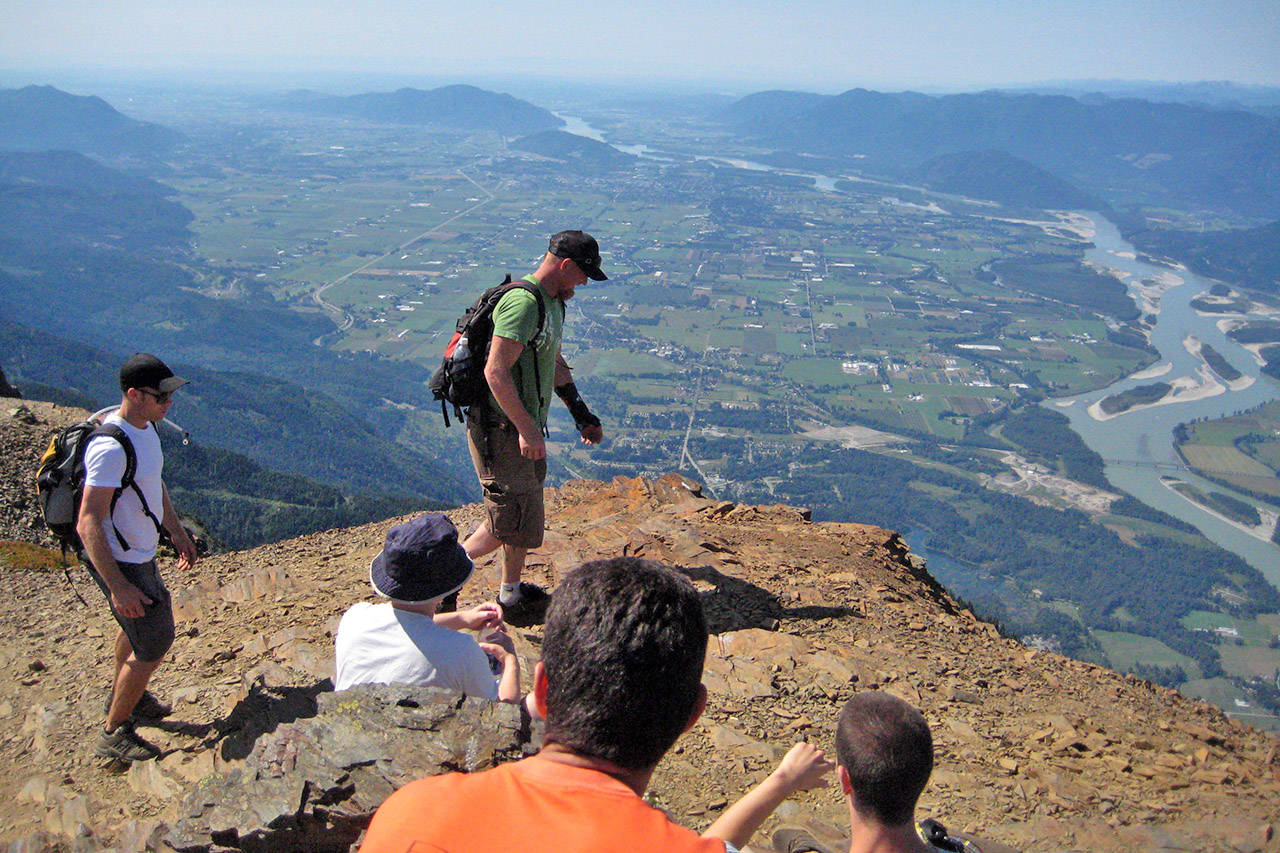Anyone climbing mountains in the B.C. back country right now should carefully consider the risks posed by the high snowpack levels.
The presence of snow requires certain safety precautions, according to Chilliwack Search and Rescue.
Hiking in light summer clothing, not wearing proper footwear or carrying any survival gear is not recommended, said Adam Laurie, vice-president and training officer with Chilliwack Search and Rescue (CSAR).
Proper footwear would be mid-cut to high-cut hiking boots with ankle support and good traction. Trail runners are not recommended for snow crossings or rocky terrain.
”Remember to carry the 10 essentials, be prepared for snow travel and make sure you tell someone where you’re going, what you’re doing and when your planned return time is. You can do this all using our online Trip Planner,” he added. “Be safe!”
Telling someone by email is the safety concept behind the trip planner idea.
Over the July 1 long weekend, CSAR members spotted groups of hikers climbing Mt. Cheam who were both prepared, “and unfortunately, not so prepared,” Laurie said.
Some had day packs with water and extra clothing as well as hiking poles for the snow, while others had almost nothing in terms of gear.
“The unprepared ones had no equipment, water, or extra clothing.”
Day hikers included families, couples and seniors. Some hiked in shorts and t-shirts, summer dresses, or running shoes that were unlaced.
“I would venture to say that about 25 per cent of the hikers over the weekend were at a higher risk of falls, injury, or requiring rescue at some point,” he said.
It show more education is needed for those entering the back country.
Mt. Cheam “is a classic and well sought-after hike,” Laurie noted, not only for the stunning alpine experience but also for the amazing 360-degree views from the summit.
The world-class hike attracts visitors from across the Fraser Valley and the Lower Mainland.
The well-marked trail to Cheam makes the hike easy to navigate, but the “increased snowpack this year” is making the approach extra challenging in some spots. The snow only recently melted from the trailhead.
“There are many areas where the trail is still under snow and the adventurer will need traverse the snow fields to make his/her way to the saddle and summit.
There is snow on the ground as hikers enter the alpine meadow. But last year this time, there was no snow there. Lack of rain and cool overnight temperatures are slowing down the melting process.
“Believe it or not, this year the snow starts less than 20 minutes into the hike. This increases your risk and exposure to a potential fall, injury, or even death,” Laurie said.
CSAR reminds hikers to:
- Dress for changing weather and colder climates;
- Bring hiking poles for snow travel; and
- Wear appropriate footwear for snow crossings and mountainous terrain.
